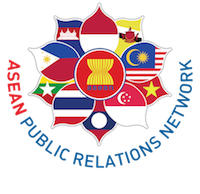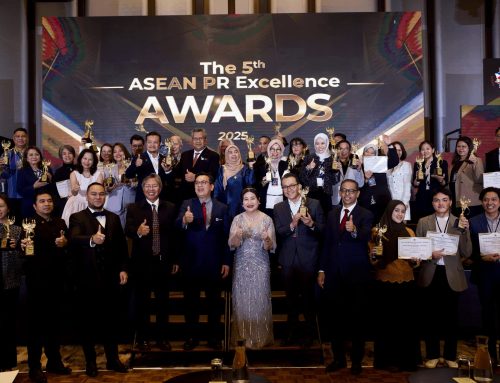By Kara Alaimo
Kara Alaimo, Ph.D. is a global PR consultant, assistant professor of public relations at Hofstra University, and a former communicator at the U.N. and in the Obama administration. Her book, Pitch, Tweet, or Engage on the Street: How to Practice Global Public Relations and Strategic Communication, was published by Routledge in August 2016. Follow her Twitter handle, @karaalaimo, and visit her website, www.karaalaimo.com.
My book which was published by Routledge in August, Pitch, Tweet, or Engage on the Street: How to Practice Global Public Relations and Strategic Communication, explains how to adapt communication strategies and messages for different global markets. As part of my research for the book, I interviewed senior practitioners in 31 countries about best local public relations practices. Here are five of the coolest strategies I discovered around the world:
Having Fun in Thailand: Thai people are famous for sanuk, or their “fun-pleasure orientation.” Daradirek Ekachai and Rosechongporn Komolsevin describe sanuk as “adopting a joyful and pleasant perspective toward life and work.” For this reason, public relations strategies focused on fun tend to be successful in this country. Ekachai and Komolsevin explain that the United Broadcasting Corporation (UBC) – a cable television station – once organized the “‘World’s Biggest Painting’ project” which involved over 4,000 kids and their families in an event that set a Guinness World Record, “in the bargain getting much positive publicity for UBC.”
Making Friends in South Africa: Because South Africa is such a diverse country (there are eleven official languages!), PR practitioners need diverse approaches for different audiences. Many therefore focus on making friends with local influencers in different communities who can evangelize for them.
Merle O’Brien, a former President and Fellow of the Public Relations Institute of Southern Africa, says that local influencers in South Africa’s townships (informal settlements outside cities where predominantly non-white people live) “may not be educated, with money, but may be at the forefront of what’s hot and what’s not. Its stature, not economics, that makes a township influencer.”
In rural South Africa, the local influencers are the village chiefs. Themba Ngada, Head of Marketing for the City of Cape Town, says, “if someone wants to interview me and I live in a village, they must talk to the chief first. Short of bringing a proper gift for a chief, which would be a goat or a sheep, a bottle of brandy will do, as this is good currency in rural Xhosaland.”
Hosting a Jamuan in Malaysia: David Lian, General Manager of the Zeno Group in Malaysia, says that when he and his colleagues promoted a telecommunications company in local villages, they often organized something called a jamuan – a Malay word for a feast – by inviting about ten villagers to dinner at a local restaurant. “In exchange for the food you give them, they sit down and answer your questions,” he says. This can generate remarkable insight on the types of PR approaches that will work locally. After learning more about one village, his agency organized a carnival on behalf of their telecommunications client, in order to introduce their brand to local people at the event. Lian recalls that “the insight was that, being a village, they didn’t have a lot of entertainment and they enjoy the simple things of life, like a carnival.”
Going on a Soap Opera in Brazil: During the final episodes of Brazil’s ultra-popular telenovelas, the streets empty out because people are all inside glued to their television sets. Angela Giacobbe, Manager of Communication and Sustainability for the Brazilian maritime and port logistics company Wilson, Sons, therefore recommends partnering with Brazil’s soap operas – which are exported to countries around the world, including Portugal, Angola, and China – to include content in episodes. Giacobbe says that product placement on such shows has been found to promote effective brand recall.
Making Canadians Feel Good: Elissa Freeman, Principal of @elissapr communications, says that, in Canada, public relations practitioners are actually nice. “Any time I’m working with a client, there’s never an untoward comment to make someone look lesser,” she says. “Comparisons to the other brand or the other issue just don’t play well here and Canadians get very indignant about that.” Freeman says that a 2014 campaign in which the Canadian airline WestJet sent Santa Claus to ask people in the Dominican Republic what they wanted for Christmas and then surprised them by making their wishes come true epitomizes the type of approach that is received well in the Canadian market. “We tend to like things that make us feel good,” she says. “That’s the kind of thing that plays well here.”
Find lots more cool ideas – and tips for adapting communication strategies for different markets around the world – in Pitch, Tweet, or Engage on the Street. Friends of the APRN can get a 20% discount on the book and free shipping using the promo code FLR40 at https://www.routledge.com/Pitch-Tweet-or-Engage-on-the-Street-How-to-Practice-Global-Public-Relations/Alaimo/p/book/9781138916050. The book can also be ordered at Amazon by using this link: http://amzn.to/29rglq7.





